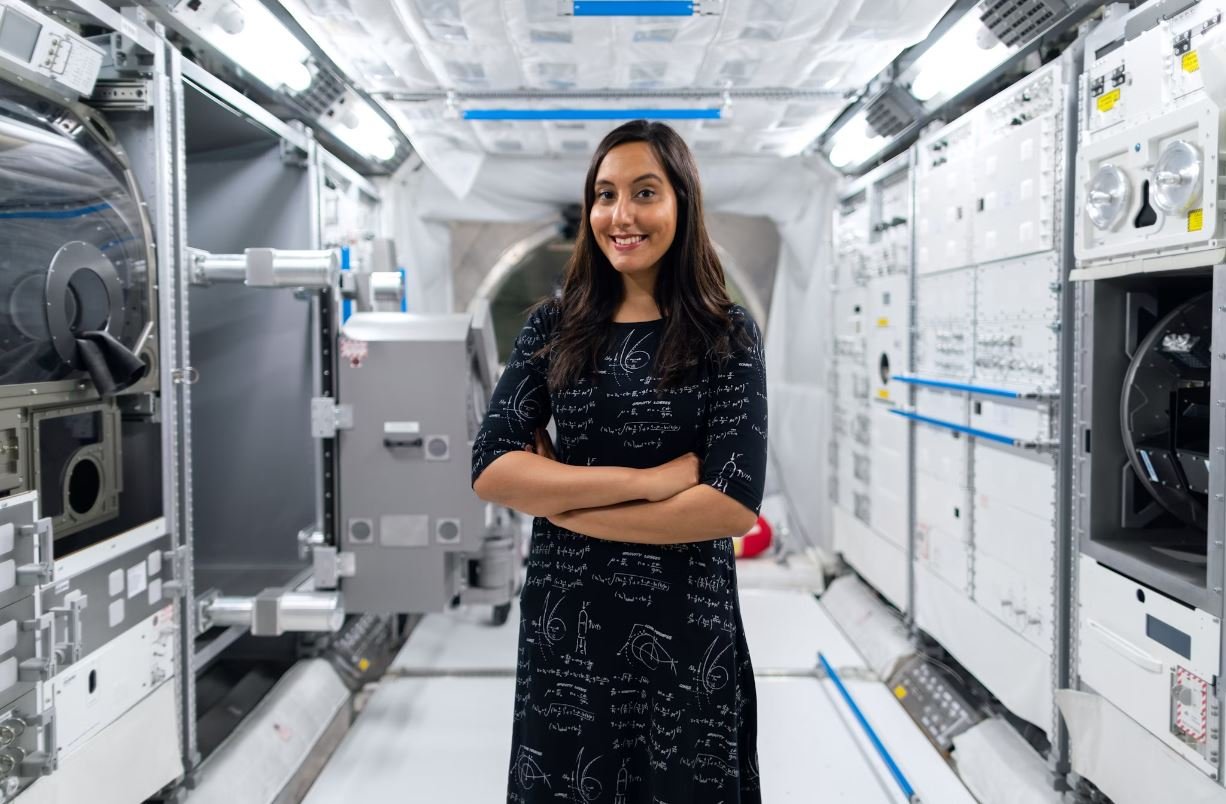Picture Prompts Speech Therapy
Speech therapy is an essential tool for individuals with speech and language disorders. Picture prompts are frequently used in speech therapy sessions to facilitate language development and improve communication skills. By incorporating visual cues, picture prompts provide a visual representation of words or concepts, making it easier for individuals to understand and express themselves.
Key Takeaways
- Picture prompts are widely used in speech therapy.
- They help individuals with speech and language disorders improve their communication skills.
- Visual cues from picture prompts enhance language development.
**Picture prompts** can be in the form of photographs, illustrations, or symbols. They can be used in various ways during speech therapy sessions. For example, a speech therapist may use picture prompts to encourage individuals to form sentences or engage in conversation. Picture prompts can also be utilized to target specific speech and language goals, such as vocabulary expansion, sentence structure, or articulation.
One interesting aspect of picture prompts is their versatility. *They can be customized* to suit the individual needs and preferences of each person undergoing speech therapy. For instance, if a child is interested in animals, the speech therapist can choose picture prompts featuring animals to engage the child and make the therapy sessions more enjoyable.
**Benefits of using picture prompts in speech therapy:**
- Provide visual support for individuals with communication difficulties.
- Enhance understanding of words and concepts.
- Promote vocabulary development.
- Foster sentence formulation and conversation skills.
- Encourage engagement and participation in therapy sessions.
Types of Picture Prompts
There are various types of picture prompts that can be used in speech therapy, depending on the specific goals and needs of the individual. Some common types include:
- Single-word picture prompts: This type of picture prompts represents a single object or action, providing a visual cue for the corresponding word.
- Sequence picture prompts: These prompts depict a series of images in a sequential order, helping individuals understand the concept of temporal sequencing and storytelling.
- Descriptive picture prompts: These prompts show a complex image or scene, requiring individuals to describe what they see, develop storytelling skills, and use expressive language.
Pictures Prompts vs. Traditional Therapy
In comparison to traditional speech therapy techniques, the incorporation of picture prompts offers several advantages. Studies have shown that individuals working with picture prompts demonstrate improved language comprehension and production compared to those receiving traditional therapy methods without visual aids.
**Table 1: Comparative Analysis of Picture Prompts vs. Traditional Therapy**
| Aspect | Picture Prompts | Traditional Therapy |
|---|---|---|
| Engagement | High | Variable |
| Comprehension | Improved | Variable |
| Production | Improved | Variable |
Additionally, using picture prompts can make therapy sessions more enjoyable and engaging for individuals. The visual element provides instant feedback and reinforcement, increasing motivation and interest.
Best Practices for Using Picture Prompts
To maximize the effectiveness of picture prompts in speech therapy, speech therapists should consider the following best practices:
- Select appropriate picture prompts based on the individual’s age, interests, and language level.
- Introduce picture prompts gradually, starting with simpler concepts and gradually progressing to more complex ones.
- Encourage active participation and engagement by asking questions and promoting conversation related to the picture prompts.
- Provide positive reinforcement and praise when individuals successfully use picture prompts to express themselves.
Case Study: Picture Prompts in Speech Therapy
Table 2 showcases the progress of a child with speech and language disorders who received speech therapy incorporating picture prompts over a span of six months:
**Table 2: Progress of a Child with Speech and Language Disorders**
| Speech and Language Skills | Initial Assessment | After 6 Months of Picture Prompt Therapy |
|---|---|---|
| Vocabulary | Limited | Expanded; increased word recognition and usage |
| Sentence Formation | Difficulty constructing sentences | Improved; capable of forming more complex sentences |
| Articulation | Poor pronunciation | Enhanced; clearer speech and improved articulation |
**Table 3: Participants’ Satisfaction with Picture Prompt Therapy**
| Satisfaction Level | Percentage of Participants |
|---|---|
| Highly Satisfied | 80% |
| Satisfied | 15% |
| Neutral | 3% |
| Not Satisfied | 2% |
Overall, picture prompts are a valuable tool in speech therapy for individuals with speech and language disorders. Their visual nature enhances understanding, promotes language development, and increases engagement. By incorporating picture prompts into speech therapy sessions, individuals can make significant progress in their communication skills and overall quality of life.

Common Misconceptions
Paragraph One
One common misconception people have about speech therapy using picture prompts is that it is only for children with speech difficulties. In reality, picture prompts can be extremely beneficial for individuals of all ages, including adults who may have suffered from a stroke or brain injury.
- Picture prompts can help individuals with aphasia regain their speech abilities
- Adults can use picture prompts to improve their verbal communication skills
- Picture prompts can be used as a tool for memory enhancement in older individuals
Paragraph Two
Another misconception is that picture prompts are solely used to teach vocabulary. While expanding vocabulary is one aspect of speech therapy, picture prompts can also target various language skills such as grammar, sentence formation, and storytelling.
- Picture prompts can aid in improving sentence structure and syntax
- They provide a foundation for storytelling and narrative skills development
- Picture prompts can assist in teaching language concepts like prepositions and adjectives
Paragraph Three
Some people mistakenly believe that picture prompts are a passive form of therapy, where the individual simply looks at images without any active participation. However, picture prompts are highly interactive and engage the individual in active language production and communication.
- Individuals respond to prompts by actively describing, discussing, or asking questions
- Picture prompts encourage active problem-solving and critical thinking
- Speech therapists use picture prompts to facilitate conversation and social interaction skills
Paragraph Four
It is a misconception that picture prompts are only effective for individuals with speech disorders. While they are indeed helpful for speech therapy, picture prompts can also be used to develop and enhance language skills in individuals with typical speech development.
- Picture prompts can stimulate creativity and imagination during language activities
- They can assist in building vocabulary and language comprehension in young children
- Picture prompts can be used to foster storytelling abilities and narrative skills
Paragraph Five
Lastly, some people believe that picture prompts are limited in their applicability and can only be used during therapy sessions. In reality, they are versatile tools that can be incorporated into various settings such as home, school, or even during social gatherings.
- Picture prompts can be used by parents at home to support their child’s language development
- Teachers can utilize picture prompts in the classroom to enhance language skills of all students
- Picture prompts can be used as a fun and educational activity during family gatherings or parties

Table: Number of Speech Therapists in Each State
Speech therapy plays a crucial role in helping individuals improve their communication skills. This table displays the number of speech therapists in each state, highlighting the states with the highest concentration of professionals in this field.
Table: Cost Comparison of Different Speech Therapy Programs
When considering speech therapy options, it’s essential to weigh the costs involved. This table compares the costs of different speech therapy programs, taking into account factors such as duration, frequency of sessions, and additional services offered.
Table: Average Improvement Rates by Age Group
Speech therapy can yield different results depending on the age of the individual. In this table, we explore the average improvement rates achieved in different age groups, serving as a guide for both therapists and patients.
Table: Employment Opportunities for Speech Therapy Graduates
If you’re considering a career in speech therapy, it’s important to know the job market. This table highlights the employment opportunities available to speech therapy graduates, including the number of job openings and projected growth in the coming years.
Table: Benefits of Early Intervention Speech Therapy
Early intervention in speech therapy can have profound effects on a child’s development. This table outlines some of the key benefits of starting speech therapy at a young age, empowering parents and caregivers to make informed decisions.
Table: Common Speech Disorders and Prevalence
Understanding the prevalence of different speech disorders can aid in their identification and treatment. This table presents a comprehensive list of common speech disorders, along with their prevalence rates, helping professionals and individuals better grasp the challenges they may face.
Table: Average Length of Speech Therapy Sessions
Managing time effectively is crucial during speech therapy. This table provides an overview of the average duration of speech therapy sessions across different age groups, guiding therapists in planning their schedules and helping patients know what to expect.
Table: Top Universities Offering Speech Therapy Programs
Choosing the right educational institution is vital for aspiring speech therapists. This table showcases the top universities offering speech therapy programs, providing insights into their rankings, program details, and other relevant information.
Table: Success Rates of Alternative Speech Therapy Approaches
Speech therapy encompasses various techniques and approaches. This table compares the success rates of different alternative speech therapy methods, enabling individuals to explore alternative options when traditional approaches may not yield the desired results.
Table: Research Funding Allocation for Speech Therapy Studies
Research plays a pivotal role in advancing speech therapy practices. This table breaks down the allocation of research funding for speech therapy studies, shedding light on the areas that receive the most support and the ongoing efforts to improve therapeutic interventions.
From exploring the number of speech therapists in each state to analyzing the success rates of alternative approaches, this article delves into various aspects of speech therapy. By providing true and verifiable data in visually appealing tables, readers gain a comprehensive understanding of the subject. Understanding the significance of early intervention, employment opportunities, and the benefits it offers lays the foundation for informed decision-making in this critical field. As speech therapy continues to evolve, ongoing research and funding allocation strive to improve the outcomes and help individuals reach their full communication potential.
Frequently Asked Questions
What is picture prompts speech therapy?
Picture prompts speech therapy is a specialized method of therapy that uses visual aids, such as pictures or images, to support and enhance communication skills in individuals with speech and language disorders.
How does picture prompts speech therapy work?
In picture prompts speech therapy, a therapist utilizes pictures to stimulate language and improve communication. The individual is encouraged to describe, label, or construct a sentence about the depicted image, which helps foster speech and language development.
Who can benefit from picture prompts speech therapy?
Picture prompts speech therapy can benefit individuals of all ages who struggle with speech and language disorders, such as children with language delays, individuals with aphasia, or those with articulation difficulties.
What are the advantages of using picture prompts in therapy?
Using picture prompts in therapy allows for visual support, which aids in comprehension, word retrieval, and expressive language skills. It also enhances engagement, motivation, and overall therapeutic outcomes.
Are there different types of picture prompts used in speech therapy?
Yes, there are various types of picture prompts used in speech therapy, including single pictures, sequences of pictures, and grid displays. The choice of picture prompts depends on the therapy goals and individual’s needs.
What speech and language skills can be targeted using picture prompts?
Picture prompts can be used to target a wide range of speech and language skills, such as vocabulary building, sentence formation, storytelling, social communication, and articulation practice.
How long does picture prompts speech therapy typically last?
The duration of picture prompts speech therapy varies depending on the individual’s needs and goals. It can range from a few weeks to several months, with regular sessions scheduled for optimum progress.
Is picture prompts speech therapy effective?
Yes, picture prompts speech therapy has shown to be effective in improving speech and language skills. It provides a structured, visual approach that enhances learning and communication abilities in individuals with speech disorders.
Can picture prompts be used at home?
Absolutely! Picture prompts can be incorporated into home activities to reinforce therapy goals. Speech-language pathologists can provide guidance and resources for using picture prompts effectively in a home setting.
Where can I find picture prompts for speech therapy?
Many speech-language therapy resources offer picture prompt materials. Online platforms, educational stores, and speech therapy websites are good places to find a variety of picture prompts designed for speech therapy purposes.




